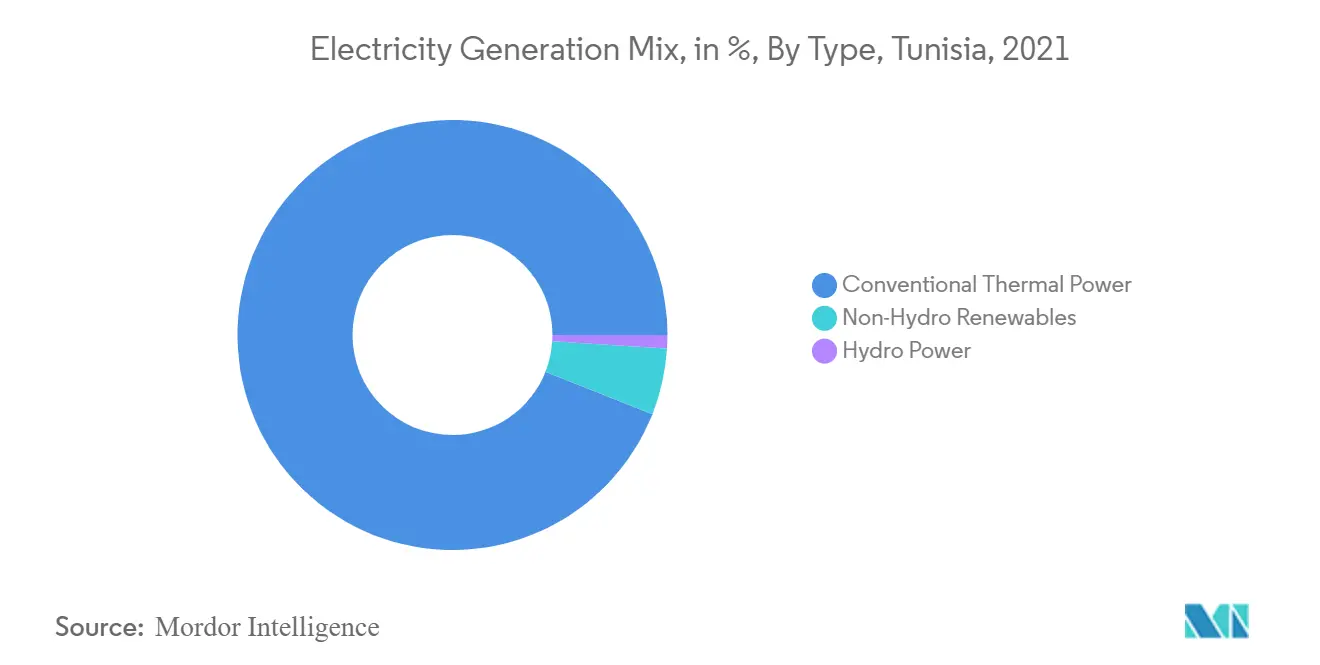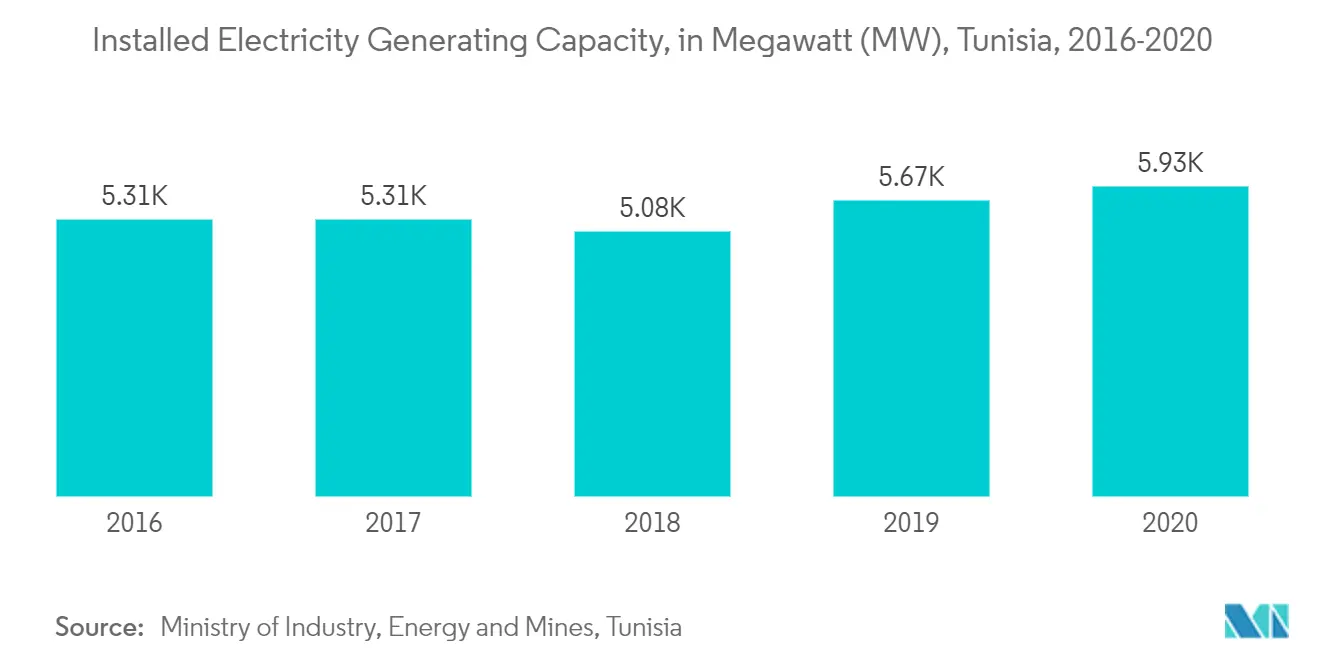Market Trends of Tunisia Power Industry
This section covers the major market trends shaping the Tunisia Power Market according to our research experts:
Conventional Thermal Power to Dominate the Market
- Conventional thermal power is the power that is generated through various sources, such as coal, natural gas, and oil. As of 2020, conventional thermal power represented more than 93% of the country's installed power production capacity.
- The Tunisian Company for Electricity and Gas relies on a variety of different electricity production centers, consisting of steam stations, gas units, and double cycles, in addition to air and water stations. During 2010-2019, the concentrated capacity for electricity generation developed by about 5% annually to pass from 3,599 MW in 2010 to 5,934 MW in 2020, i.e., a concentration of over 230 megawatts annually. In this generation, most of the production centers consists of gas stations and combined cycles.
- Out of the various sources of generating conventional thermal power, the majority of energy came from natural gas. Natural gas contributed about 97% to the conventional thermal power electricity generation, producing 18,990 gigawatt-hours (GWh) of electricity, in 2020.
- Moreover, in 2021, the government of Tunisia (GOT) is also expected to launch a tender for the construction of at least one 470-550 MW combined-cycle power plant in Skhira (south Tunisia) as an IPP. Thus, this is further likely to add to the country's conventional power generation capacity.
- Therefore, owing to the above-mentioned points, conventional thermal power generation is likely to dominate the Tunisian power market during the forecast period.

Increasing Participation of Private Players Expected to Drive the Market
- In 2020, the state power utility company, STEG, controlled more than 90% of the country's installed power production capacity and produced more than 80% of the total electricity in Tunisia. The remainder was produced by Tunisia's major independent power producer (IPP), Carthage Power Company (CPC), which owned a 471-MW combined-cycle power plant. Although STEG has resisted private investment in the power sector, the Tunisia Parliament's 2015 energy law encourages IPPs (Independent Power Producer) in the renewable energy sector and gas-fired power plants.
- Until July 2020, the government of Tunisia awarded 12 solar projects of 10 MW each, two solar projects of 50 MW each, two solar projects of 100 MW each, one solar project of 200 MW, and four wind projects of 30 MW each to the private players.
- In 2021, the GOT is expected to launch a tender for the construction of at least one of the two 470-550 MW combined-cycle power plants in Skhira (South Tunisia) as an IPP. Moreover, the government has plans to launch tenders for about 3.5 GW of renewable energy of about USD 3.5 billion by 2030, or approximately 350 MW per year, over the next ten years.
- Hence, the above points indicate that the increasing involvement of private players in the market is likely to drive the Tunisia power market over the forecast period.


